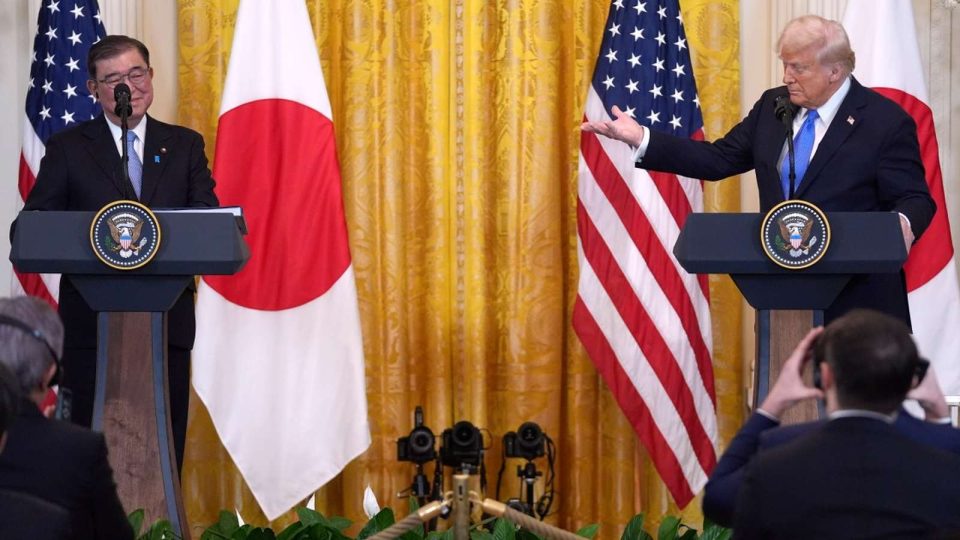After weeks of uncertainty for importers and exporters alike, the recent agreement unveiled by President Donald Trump signals a shift in how the United States and Japan will conduct business for the near future. On Tuesday evening, Trump announced that his team and Japanese leaders, after intricate negotiations, had settled on a deal intended to rebalance the long and sometimes fraught commercial relationship between the two countries, and timed perfectly, given the daunting August 1 deadline that loomed for sharply higher tariffs on Japanese goods.
The centerpiece of this deal is two-fold. First, Japan has agreed to invest a rather eye-catching $550 billion in the United States. Second, the tariff that threatened to escalate to 25 percent on Japanese merchandise will now land at 15 percent, a noticeably friendlier figure for both sides. The result, at least for now, is an environment in which markets, consumers, and businesses are only breathing a little easier.
Japan’s commitment to such a large-scale investment in the American economy instantly drew attention from both market-watchers and policy analysts. At $550 billion, the scope is enormous even in the world of multinational trade agreements. For reference, Japan has a long history as the largest foreign investor in the United States, but this figure raises the stakes significantly and appears to signal a recommitment to deepening economic links, driven by both political and business considerations. According to White House statements and reports from Tokyo, Japanese investment will focus largely on industrial sectors, high-value manufacturing, and expanding job opportunities within American communities.
On the tariff front, the reduction from the threatened 25 percent to an actual 15 percent is no small matter. Trump had used the higher number as a clear threat in the months leading up to the talks, and automakers in Japan in particular had viewed the standoff nervously. Autos comprise more than a quarter of Japan’s exports to the United States, so even a modest shift at the border can ripple across entire industries and affect tens of thousands of jobs on both sides of the Pacific.
Industry reactions reveal a mix of relief and lingering anxiety. North American car makers, who had lobbied the administration for protection against what they consider unfair competition, openly questioned whether the lower tariffs would tilt the playing field in Japan’s favor. Their argument is that if Japanese cars and trucks face a 15 percent entry fee, that is still less than what American cars encounter in Japan, even after years of bilateral talks focused precisely on market access. Meanwhile, Japanese companies, especially those with existing or planned manufacturing in the United States, found cause for cautious celebration given the less punitive tariff climate and fresh clarity on cross-border rules.
The background to all this is the continued pressure in Washington to reduce America’s trade deficit with key partners, especially those in Asia. Trump’s trade rhetoric and policy ever since his first term has revolved around forcing countries to buy more American goods, particularly cars, agricultural products like rice, and energy, and to place their bets for future growth on American soil. In this latest deal, Tokyo’s agreement to open its market further to rice, cars, and other U.S. exports fits neatly within that narrative, but the details of increased market openness on the Japanese side remain to be hammered out in subsequent talks.
Market reaction was instantaneous. Japanese automaker stocks climbed sharply after the announcement, while the yen also strengthened against the dollar as investors glimpsed an end to some of the uncertainty that had been roiling the markets. On Wall Street, futures moved solidly higher and continued higher at the open, betting that the new environment would stimulate investment and possibly reduce the risk of broader trade conflict.
Despite all the headline-making numbers, some aspects remain cloudy. Japanese Prime Minister Shigeru Ishiba has yet to reveal his government’s full perspective or provide a thorough public accounting of what the trade-offs will mean for Japanese workers and production chains. Official statements from Tokyo have so far emphasized that more details will be released once internal reviews are complete.
For now, the United States gets an economic boost through investment and renewed access to Japanese markets while sidestepping a bruising tariff war for at least a little longer. Japanese firms, especially those already operating on American soil, get to chart their next moves with a bit more predictability. Everyone else, the workers, manufacturers, and agricultural exporters in both countries, might not have all the answers yet, but they no longer have to brace themselves for even heavier tariffs in less than two weeks.

